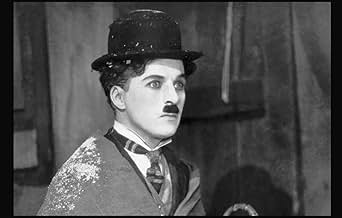IMDb RATING
8.1/10
121K
YOUR RATING
A prospector goes to the Klondike during the 1890s gold rush in hopes of making his fortune, and is smitten with a girl he sees in a dance hall.A prospector goes to the Klondike during the 1890s gold rush in hopes of making his fortune, and is smitten with a girl he sees in a dance hall.A prospector goes to the Klondike during the 1890s gold rush in hopes of making his fortune, and is smitten with a girl he sees in a dance hall.
- Nominated for 2 Oscars
- 5 wins & 3 nominations total
Jack Adams
- Man in Dance Hall
- (uncredited)
Frank Aderias
- Eskimo Child
- (uncredited)
Leona Aderias
- Eskimo Child
- (uncredited)
Lillian Adrian
- Woman in Dance Hall
- (uncredited)
Sam Allen
- Man in Dance Hall
- (uncredited)
Claude Anderson
- Man in Dance Hall
- (uncredited)
Harry Arras
- Man in Dance Hall
- (uncredited)
Albert Austin
- Prospector
- (uncredited)
F.J. Beauregard
- Man in Dance Hall
- (uncredited)
Marta Belfort
- Woman in Dance Hall
- (uncredited)
William Bell
- Man in Dance Hall
- (uncredited)
Francis Bernhardt
- Man in Dance Hall
- (uncredited)
- Director
- Writer
- All cast & crew
- Production, box office & more at IMDbPro
Storyline
Did you know
- TriviaSir Charles Chaplin stated that this was the film by which he most wanted to be remembered.
- GoofsWhen Big Jim is delirious and thinks The Lone Prospector is a chicken, The Lone Prospector removes a knife from the table and hides it in the bed. In one of the next shots, the knife is back on the table. Then in the next shot, it is gone again.
- Alternate versionsThere is a 1942 re-issue version, prepared by Charles Chaplin himself, which uses his own narration, music score, and editing (running time: 72 minutes). This version is the only one which has its copyright owned by the Chaplin Film company. Many scenes of the 1942 version derived from an alternate camera that was shooting simultaneously. This explains some of the very slight differences in camera angle, although Chaplin also deleted some footage in order to tighten the pacing (such as Big Jim and the Tramp's near-encounter in the Gold Rush town and the shot of a woman comforting another woman during the singing of "Auld Lang Syne".
- ConnectionsEdited into Werner Herzog Eats His Shoe (1980)
Featured review
I'm just an 18 year old dude in high school that was assigned this movie in a class at my school. When I first saw the genres of this movie I was not looking forward to it at all. It was the first silent movie I was seeing and also the oldest. It had originally seemed like everything I didn't look for in a "good" movie. At the conclusion of this movie I knew that my original thought process was entirely wrong. This movie has certainly changed my view on both silent and older films, especially on a comedic standpoint. There was so much about it that was appealing to the viewer. I recommend this movie to all looking to expand their film genres of interest.
- lukelandry1
- Apr 15, 2014
- Permalink
- How long is The Gold Rush?Powered by Alexa
Details
Box office
- Budget
- $923,000 (estimated)
- Gross worldwide
- $31,490
- Runtime1 hour 35 minutes
- Color
- Sound mix
- Silent(original release)
- Aspect ratio
- 1.33 : 1
Contribute to this page
Suggest an edit or add missing content





























